Observing exoplanets without equipment, experiences from university students
- 1Aristotle University of Thessaloniki, Thessaloniki, Greece (geopante@physics.auth.gr)
- 2Aristotle University of Thessaloniki, Thessaloniki, Greece (ggrivas@physics.auth.gr)
- 3University of Ioannina, Ioannina, Greece (gxlekkas@gmail.com)
- 4University College London, London, UK (anastasia.kokori.19@ucl.ac.uk)
1. Introduction
University students with a strong interest on exoplanets who are willing to engage in astronomical research with telescopic observations face challenges since many higher education institutions are located in areas with poor observing conditions. Traditionally, a small number of students are given the opportunity to travel to an observatory, but lack of funding in most institutions in combination with pandemic related travel restrictions led to a further reduction of such observation excursions. Having said that, remote observing capabilities can offer access to telescope facilities and can also be used for educational purposes. However, remote observing requires a coordinated approach including the scheduling and the tools used to obtain integrated scientific results.
Open science projects, such as the ExoClock project can be used as a tool to educate students and engage them with exoplanet research. This provides an excellent chance for university students to undertake cutting-edge science that also has a meaningful impact on a future space mission.
2. ExoClock Project
ExoClock is an international and educational project for exoplanet enthusiasts around the world with the primary goal of monitoring transiting exoplanets and keeping their respective ephemerides up-to-date. The project promotes the idea that research is an effort that everyone can contribute and, thus, it is open to collaborations with amateur astronomers and encourages the participation of school and university students.
To facilitate this, user-friendly tools and a dedicated website have been developed as part of the project. The website includes audiovisual educational material, data analysis tools, instructions, observational data and graphics [1,2]. All sources are online, free, and available for everyone. ExoClock aims to facilitate a coordinated programme of ground-based observations to maximise the efficiency of the Ariel space mission aiming to observe 1000 exoplanets and characterize their atmospheres [3].
3. Las Cumbres Observatory
ExoClock in collaboration with the Las Cumbres Observatory (LCO) provided us with observing time to obtain some exoplanet transits while priority was given to participants and especially students and pre-amateur astronomers that didn't have access to equipment. We utilized the LCO network’s ground-based 0.4 m robotic telescopes [4], with access provided via the ORBYTS programme (Original Research by Young Twinkle Students); an educational research programme working in collaboration with ExoClock [5].
The LCO network consists of six sites which host 0.4 m (roughly 16 inches) telescopes which are spread across both the northern and southern hemispheres as shown in Figure 1. Specifically, we utilized the 0.4 m telescope at Cerro Tololo Observatory located in Chile, (lat, lon) = (-30.2°, -70.8°), using its imaging mode and the SDSS-rp filter.
Figure 1
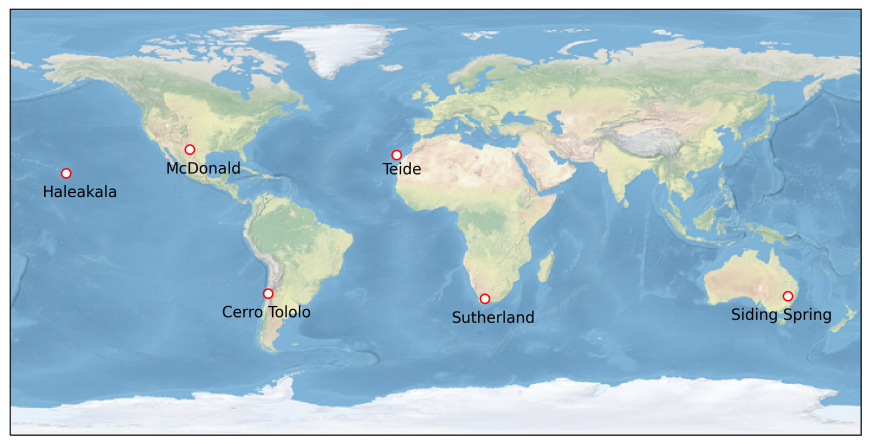
4. Methodology
By loading in the size and location of the telescope, the ExoClock platform provides a scheduler with a list of potential observations over the coming days; an example of this schedule is shown in Figure 2.
Figure 2
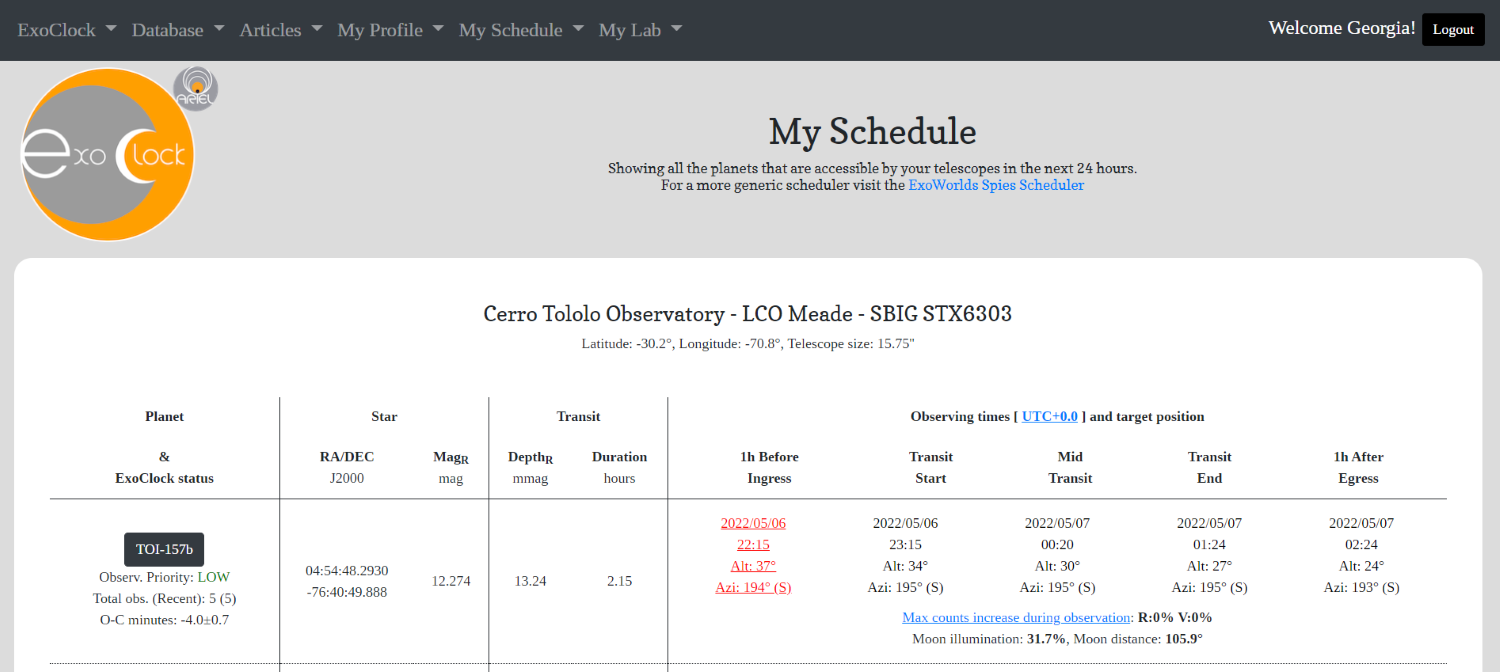
We chose to observe the exoplanet HATS-10b which is indicated as a target with alert priority due to a significant shift in the ephemeris that was found a year ago by another ExoClock member. The choice of target was also restricted by the star magnitude and transit depth but also due to the transit duration.
The data were obtained from the LCO archive and analysed by using the HOlomon Photometry Software (HOPS) [7], which is an interactive user-friendly tool, for reduction, alignment, photometry and light curve extraction. This software is open-source and available on Github (https://github.com/ExoWorldsSpies/hops).
Figure 3
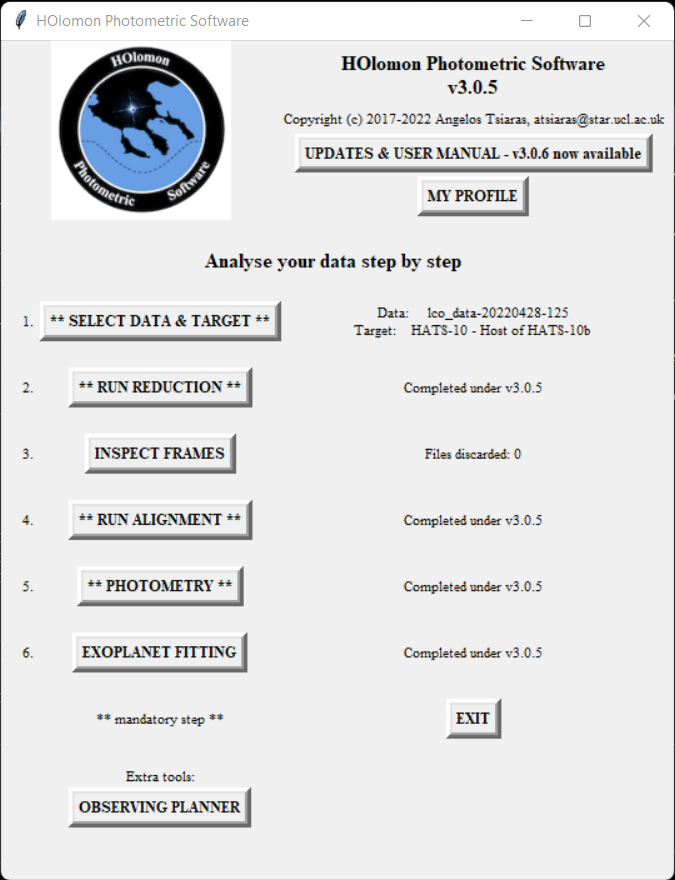
The LCO portal was also developed to be user-friendly with graphics and instructions and provided documentation for inexperienced users. A screenshot of creating an observation request in the LCO portal is shown in Figure 4.
Figure 4
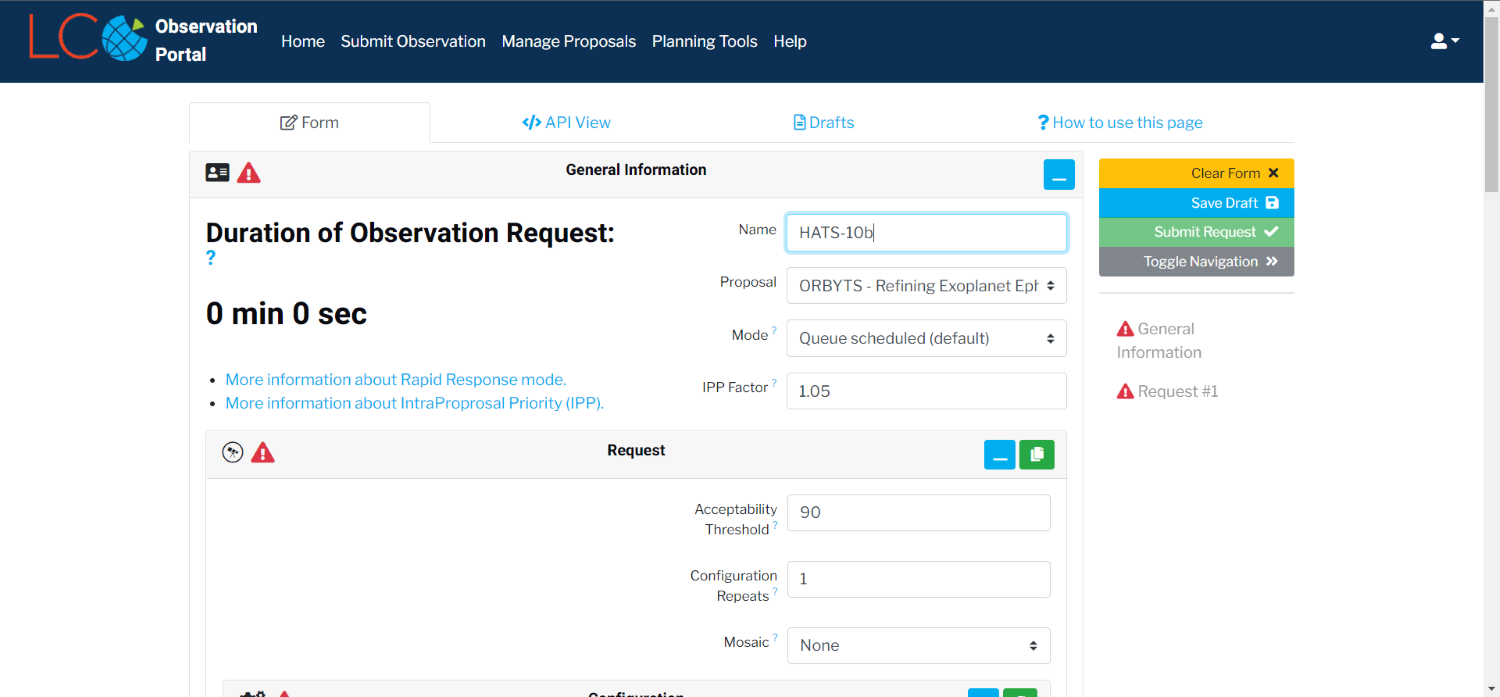
5. Results & Discussion
We acquired data for the transit of the planet HATS-10b on the 28th of April 2022, as shown in Figure 5. The light curve covers the full transit duration, plus a baseline of up to toughly half the transit duration. Our results suggest that there is a shift in the timing of the transit and it occurs approximately ~28 minutes earlier than it's literature ephemeris. This result is consistent with previous results by another ExoClock member, giving us confidence that the deviation from the literature ephemeris that we find is correct.
The planet is potentially a viable target for atmospheric characterisation and our data, which were taken using the LCO network of ground-based telescopes, will be combined with observations from other users of ExoClock to ensure that the transit times of these planets continue to be well-known, far into the future. As TESS and other surveys continue to find planets, ephemeris refinement projects will become ever more important and educational outreach and open science programmes have the potential to play a large role in maintaining transit times for the next generation of telescopes [5].
Figure 5
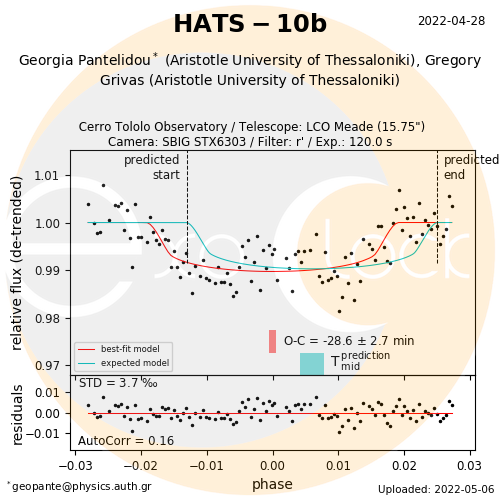
6. Benefits from our experience
Through the ExoClock project undergraduate students have a unique opportunity to contribute to an upcoming ESA mission. One of the main benefits of this experience is that those involved not only acquire the theoretical background needed but also actively participate in real scientific research by obtaining and analyzing astronomical data, under proper supervision and guidance; that otherwise might not have the chance to experience during their undergraduate studies. In this way, university students cultivate a scientific mindset by obtaining and reviewing scientific results and improve their computational skills. At the same time, they develop new soft skills regarding observatory operations and regulations, communicating and cooperating with fellow observers while getting specialized knowledge in planetary sciences in an appealing and interactive manner.
Additionally, outreach activities in open science projects can provide to university students a first look of the research environment by experiencing research in practice and can help them choose their future career. After all, experience and skills gained from hands-on opportunities such as the ones provided from ExoClock are highly aligned and greatly valued in today's academic and business environments [8].
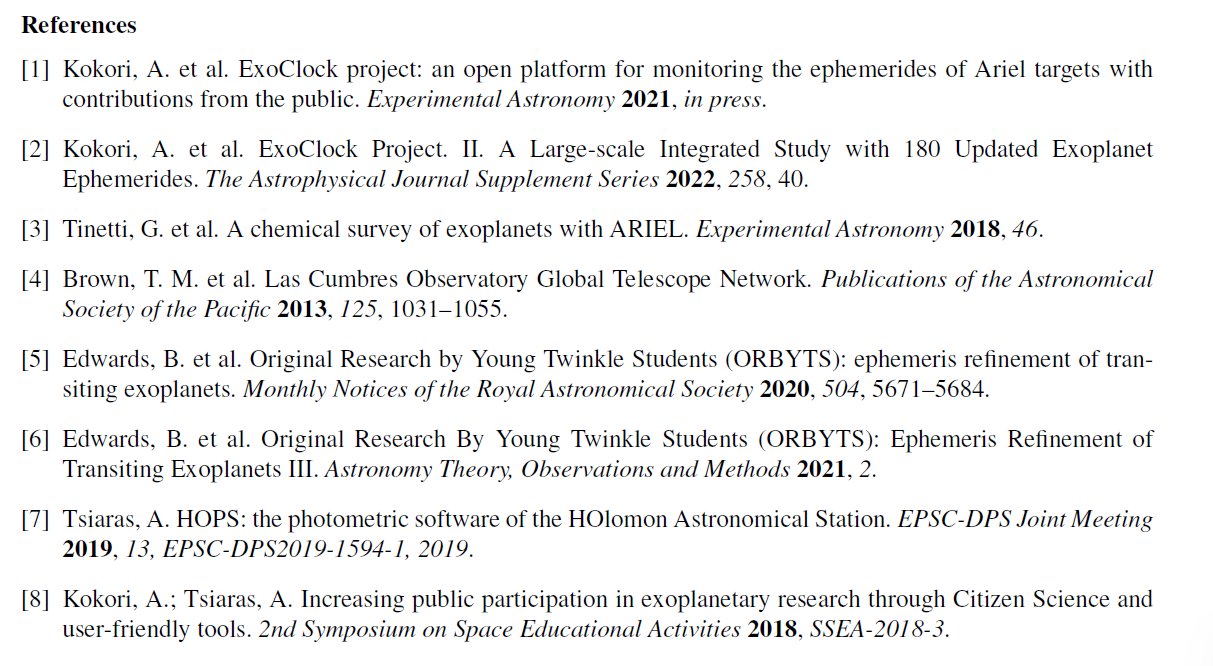
How to cite: Pantelidou, G., Grivas, G., Lekkas, G., and Kokori, A.: Observing exoplanets without equipment, experiences from university students, Europlanet Science Congress 2022, Granada, Spain, 18–23 Sep 2022, EPSC2022-214, https://doi.org/10.5194/epsc2022-214, 2022.

